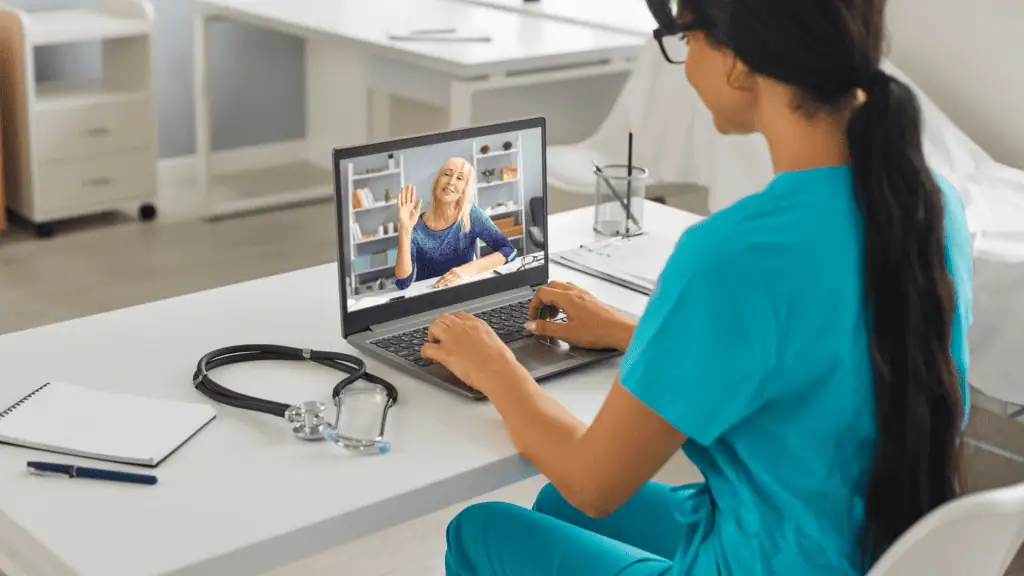At EG Healthcare, we believe that everyone deserves high-quality, compassionate care—no matter their gender identity or sexual orientation. As a primary care practice, we’ve seen firsthand how LGBTQ-affirming healthcare isn’t just a matter of courtesy or inclusion—it’s a critical factor in improving health outcomes and building trust with some of the most underserved communities in medicine.
Too often, LGBTQ+ individuals face stigma, miscommunication, or outright discrimination in healthcare settings. These negative experiences can lead to delays in care, avoidance of treatment, and poor health outcomes. But when healthcare is designed to affirm and support LGBTQ+ identities, the benefits are clear: better engagement, earlier interventions, improved mental health, and stronger provider-patient relationships. In this post, we’ll explore why LGBTQ-affirming healthcare matters, what it looks like in practice, and how our team of nurse practitioners, techs, and support staff put these principles into action every day.

The Need for LGBTQ-Affirming Healthcare
LGBTQ+ individuals experience significant health disparities across the board. Research shows higher rates of depression, anxiety, suicide, substance use, and certain chronic conditions in LGBTQ+ populations compared to their cisgender, heterosexual peers. Transgender individuals, in particular, face alarming barriers to care: over 20% report avoiding medical care due to fears of discrimination, and many struggle to find providers who understand their specific needs.
LGBTQ-affirming healthcare aims to address these disparities by creating a safe, respectful environment where patients feel seen, heard, and supported. That doesn’t mean offering “special” treatment—it means providing equitable care that acknowledges and affirms each person’s lived experience, body, and identity.
What Does LGBTQ-Affirming Healthcare Look Like?
At EG Healthcare, LGBTQ-affirming healthcare starts the moment a patient walks through our doors—or logs in for a telehealth visit. From inclusive intake forms and gender-neutral bathrooms to trained staff and open dialogue, every detail matters. Here are just a few examples of what it means to affirm LGBTQ+ patients:
- Inclusive Language: We ask for and respect patients’ names and pronouns. Our nurse practitioners and staff are trained to avoid assumptions and speak in ways that validate all identities.
- Holistic History-Taking: We go beyond binary gender questions to get a full picture of a patient’s health and life. This ensures that screenings, labs, and care plans are relevant and personalized.
- Culturally Competent Mental Health Care: Many LGBTQ+ individuals face trauma related to family rejection, bullying, or societal stigma. Our providers are sensitive to these issues and understand the mental health toll they can take.
- Privacy and Trust: We prioritize confidentiality and consent at every step. This is especially important for LGBTQ+ youth, who may not feel safe disclosing their identity to unsupportive families.
Providing LGBTQ-affirming healthcare means staying educated, flexible, and accountable. As healthcare professionals, we know that affirming care isn’t static—it’s a commitment to continuous learning and unlearning.

Why Affirmation Improves Health Outcomes
When patients feel respected, they’re more likely to seek care, follow treatment plans, and be honest about their symptoms and concerns. This is especially crucial in primary care settings, where prevention and early detection make all the difference.
Here are a few key ways LGBTQ-affirming healthcare improves outcomes:
- Increased Access to Care: When LGBTQ+ patients feel safe, they’re more likely to schedule regular visits, screenings, and check-ups. This leads to earlier detection of conditions like high blood pressure, cancer, and sexually transmitted infections.
- Improved Mental Health: Affirming care validates identities and reduces stress. Numerous studies have linked LGBTQ-affirming environments to lower rates of depression, anxiety, and suicidal ideation.
- Reduced Health Disparities: By addressing unique risk factors—such as the impact of hormone therapy or experiences of trauma—affirming care closes gaps in chronic disease management and preventive care.
- Better Communication and Compliance: Patients who trust their providers are more likely to adhere to medications, follow-up recommendations, and share sensitive health information.
- Empowered Patients: Affirming healthcare helps patients feel in control of their health. It promotes body autonomy, builds resilience, and fosters a sense of partnership between patient and provider.
We’ve seen this transformation happen countless times at EG Healthcare. Whether it’s a trans teen finally opening up about their struggles, or a nonbinary adult feeling heard for the first time, LGBTQ-affirming healthcare isn’t just a clinical strategy—it’s a life-saving commitment.
The Role of the Nurse Practitioner
In our practice, nurse practitioners play a central role in delivering LGBTQ-affirming healthcare. With their patient-centered training and holistic perspective, NPs are well-positioned to build trust and offer personalized care that honors each patient’s identity.
Our nurse practitioners undergo ongoing training in cultural competence, trauma-informed care, and gender-affirming practices. They take the time to listen—really listen—and create care plans that reflect the whole person, not just a list of symptoms.
Because NPs often spend more time with patients than traditional physicians, they can address both physical and emotional concerns. This is especially valuable for LGBTQ+ patients, who may have avoided care in the past or had negative experiences with other providers.

Barriers to LGBTQ-Affirming Care
Despite growing awareness, many LGBTQ+ individuals still struggle to find affirming healthcare. Some of the most common barriers include:
- Lack of Provider Training: Many clinicians receive little to no education on LGBTQ+ health in medical or nursing school.
- Institutional Bias: Policies, electronic health records, and billing systems are often built around binary gender norms.
- Financial Hurdles: LGBTQ+ patients may face higher rates of poverty, underinsurance, or job-related discrimination, making it harder to access consistent care.
- Geographic Gaps: Rural and suburban areas may lack providers who offer LGBTQ-affirming healthcare, leaving patients to travel long distances or go without care entirely.
At EG Healthcare, we actively work to remove these barriers. We provide training to our entire staff—not just clinicians—on how to create a welcoming environment. We advocate for changes in policy and technology that support inclusive care. And we offer telehealth services that extend LGBTQ-affirming healthcare beyond our physical office walls.
The Bigger Picture: Community and Accountability
LGBTQ-affirming healthcare doesn’t exist in a vacuum. It’s part of a broader commitment to health equity, social justice, and community well-being. We believe that affirming care is about more than the individual appointment—it’s about dismantling the systemic inequalities that harm LGBTQ+ lives.
This means listening to patients’ feedback. It means hiring diverse staff. It means showing up for Pride—not just with rainbow flags, but with policies, training, and care that reflect those values year-round.
At EG Healthcare, we’re not perfect. But we are committed. We continue to examine our own biases, seek out education, and hold ourselves accountable to the communities we serve. Our goal is not just to treat LGBTQ+ patients—but to affirm them, to uplift them, and to ensure that our healthcare system works for everyone.
Final Thoughts: What Patients Deserve
Healthcare should never be a source of fear, shame, or judgment. LGBTQ-affirming healthcare ensures that every person—regardless of their identity—can walk into a clinic and know they’ll be met with respect, dignity, and evidence-based care.
At EG Healthcare, we’re proud to be a practice where LGBTQ+ patients can find not just acceptance, but true affirmation. From our nurse practitioners to our front desk staff, we are united in our belief that inclusive care isn’t optional—it’s essential.
If you or someone you know is looking for a primary care provider who understands and honors the unique needs of the LGBTQ+ community, we invite you to connect with us. We’re here to listen. We’re here to help. And we’re here to affirm.


















